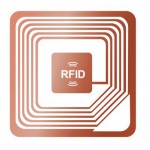RFTrackIT™ – Laboratory Sample Tracking Solutions
CS ols expertise extends into the field of Radio Frequency Identification / RFID labelling for laboratories. Although this technology has been around for many years, barcode based labelling is still the main technology used in laboratories. RFID has a number of advantages which could provide major time and efficiency savings.
ols expertise extends into the field of Radio Frequency Identification / RFID labelling for laboratories. Although this technology has been around for many years, barcode based labelling is still the main technology used in laboratories. RFID has a number of advantages which could provide major time and efficiency savings.
Can  be used throughout your lab / site / biobank
be used throughout your lab / site / biobank
RFID labels and tags can be used throughout the lab and are not limited to conventional labelling of tubes, plates, containers, sacks, bags, cylinders, boxes etc. Plastic based tags can, for example, withstand sample preparation steps even in acid/cyanide/aqueous environments and so RFID can be used throughout your lab workflow.
Location & Storage
The big advantages are that unlike barcode labels you don’t have to ‘see’ a label to read it, and because each label (tag) has a unique RFID you can read many labels simultaneously. In the laboratory this means that you can:
Move things around without a handheld reader
RFID readers mounted in fixed locations will pick up movement of samples without needing a handheld reader. e.g. in and out of freezers or storage, being booked into sample reception, used for external sampling or for inventory management / location tracking.
Perform Multiple reads
There is no need to read or scan individual samples, as an appropriate RFID reader can pick up all the RFID labels from sample in racks or plates or even a defined lab area in a single read, saving time and errors.
Find samples / samples in batches
Finally there is no need to pick every sample up to read the label or scan it to find missing, urgent or interesting samples. Just use a portable RFID reader and walk around for a match. Very useful for busy labs, freezers, biobanks or large storage locations saving time and reducing problems with lost samples.
Can also be combined with barcode labelling
Using RFID does not mean dropping barcode labelling, we can design and source label stock and printers to combine the two to give you full continuity with your current systems. Our sample logging and labelling software routine can for example replace or enhance your existing LIMS sample entry mechanism.
Advantages of RFID Versus Barcodes
RFID tags and barcodes both carry information about products. The table below highlights major differences and advantages of RFID tags and labels:
|
Feature |
Barcodes |
RFID Tags and Labels |
| Holding data | Barcodes can be reprinted / photocopied. | RFID tags and labels carry unique identifiers that positively identify the item they are attached to. |
| Readability | Barcode scanners require direct line of sight to the printed barcode. | RFID readers do not require a direct line of sight to the RFID tag or label nor does the sample need to be touched by the operator or RFID scanner |
| Proximity | The range to read a barcode is much less, typically no more than 5 meters. | RFID tags can be read at much greater distances (depending on tag type up to 100 meters) making them very useful for tracking samples in a busy laboratory, freezer or other storage location. |
| Multiple Reading | Barcodes must be read one at a time. | Multiple RFID tags can be read simultaneously by a variety of reader types to suit reading of different containers including boxes and racks of samples. |
| Speed | Reading barcodes is time-consuming as direct line of sight is required. | RFID readers can read RFID tags much faster (e,g. >40 UHF tags/second) |
| Application | Barcode labels must be placed on the outside of the sample container or asset. | RFID tags can also be used within the sample or container of samples, so they could be used throughout an analytical workflow providing a more complete custody trail. |
| Ruggedness | Barcode label stock material can be plastic coated and used with different glues for durability. | RFID tags are typically more rugged to different environments and can be protected in a plastic cover creating the opportunity to create novel applications. |
| Read/Write | Barcode labels are read-only. | Read/write RFID tags can be used which allow new data to be written back on the tag which allows for new applications. |
| Cost | Barcode labels are generally cheaper but are not reusable. | RFID tags can be reused and the flexibility of uses and associated savings described above can offset the higher cost. |
For more information about our RFID labelling solutions, please email us at sales@csols.com or call us at [44] 1928 513535
